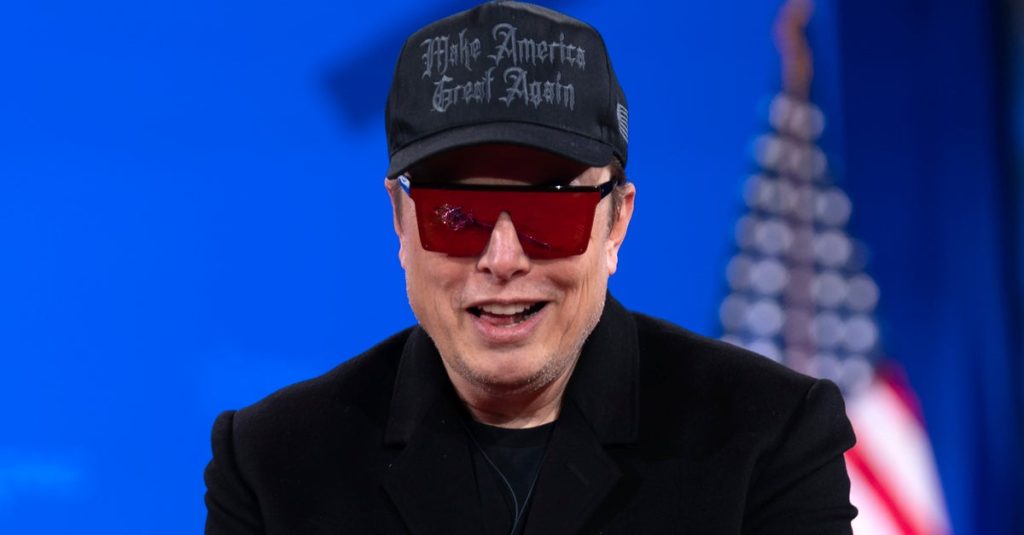Elon Musk’s New Role and the Federal Workforce: A summary of Recent Developments
In a recent social media post, Elon Musk, now at the helm of the new Department of Government Efficiency under President Donald Trump, unveiled a significant shift in how federal workers’ roles will be assessed. Musk, who has been entrusted with streamlining government operations, mandated that all federal employees must respond to a Saturday email detailing their accomplishments from the past week. This directive, communicated on Musk’s social media platform, X, stipulates that failure to respond by the Monday deadline will be treated as resignation. This move has understandably caused considerable concern and stress among federal workers, who are now under pressure to justify their positions promptly.
The Ambiguity of Musk’s Approach and Its Challenges
The abrupt implementation of this new policy has raised several logistical and managerial questions. With hundreds of thousands of federal employees spread across numerous departments, the task of reviewing responses and determining job retention appears daunting. The lack of clarity on who will evaluate these responses and the criteria for retention has added to the anxiety. The White House has not provided additional details, leaving many questions unanswered. This ambiguity highlights the challenges in managing such a vast and decentralized workforce, raising concerns about the fairness and efficiency of the process.
Musk’s Social Media Activity and Potential Influences
Interestingly, while Musk was demanding accountability from federal workers, his own social media activity on the same day was prolific, with over 100 posts. Some of these posts included the use of offensive language, which drew criticism. It is speculated that Musk’s heightened activity might have been a response to a post by President Trump, who urged Musk to adopt a more aggressive approach. Trump’s message, posted in all caps on his Truth Social platform, emphasized the need for urgency and aggressive action to "save" and enhance the country, aligning with his "Make America Great Again" (MAGA) slogan. This dynamic between Trump and Musk suggests a collaborative push towards radical changes in government operations.
Impact on the Federal Workforce: Layoffs and Hiring Freeze
The federal workforce has already experienced significant reductions under Musk’s leadership, with numerous firings and layoffs. The most recent example came from the Pentagon, which announced plans to cut approximately 5,400 probationary workers starting the following week, alongside a hiring freeze. This continues a trend of downsizing, reflecting Musk and Trump’s vision of a leaner government. These cuts have understandably caused alarm among federal employees, who face an uncertain future as the administration prioritizes efficiency and cost-cutting.
Broader Context: Trump’s Influence and the Push for Government Efficiency
President Trump’s influence on Musk’s approach is evident, as seen in his encouragement for Musk to intensify efforts to transform the government. Trump’s "MAGA" philosophy underpins this push, aiming to restore what he perceives as America’s past greatness. Musk, as the head of the Department of Government Efficiency, is central to this agenda, focusing on stripping the government of what he and Trump view as unnecessary bureaucracy. This collaboration signals a significant shift in how the federal government operates, with a focus on quick, decisive actions over traditional bureaucratic processes.
Implications for Federal Workers and the Future of Government Operations
The implications of these developments are profound for federal workers, many of whom now operate under a cloud of uncertainty. The requirement to justify their roles weekly, coupled with the ongoing layoffs, creates a high-pressure environment that could impact morale and productivity. As the government moves towards a more streamlined model, the human cost of these efficiency measures becomes a critical concern. The coming weeks and months will reveal how these changes affect both the workforce and the overall functioning of the government, with potential long-term consequences for public services and employee welfare. This situation underscores the delicate balance between efficiency and employee well-being in the pursuit of governmental objectives.









